You are using an out of date browser. It may not display this or other websites correctly.
You should upgrade or use an alternative browser.
You should upgrade or use an alternative browser.
Let's design a road front light beam
- Thread starter Bandgap
- Start date
 Help Support Candle Power Flashlight Forum
Help Support Candle Power Flashlight Forum
msxtr
Newly Enlightened
I highly doubt that those DX optics produce a gradient beam pattern, which is key to an ECE style beam. Please correct me if Im wrong!

About 1 meter to the wall

Greetings - Saludos
msxtr
My proposal is:
With LEDs getting brighter and brighter the default 'circular' beam is getting dazzling to on-coming drivers and all that light above the horizontal could be better used lighting the road and roadside hazards.
There is no reason why the proposed light could not be used alongside a powerful circular beam in the same way that cars have dip and main beams.
This is also a concern for me (I actually had someone say to me tonight on the ride home "those lights [Ayups] are too bright"). In addition the Ayups are great at illuminating road signs but not that good at picking up pot-holes ... so I've been looking for alternatives. I found these the other day:
http://www.dosun.us/portablelight/index_light.html
These have bright and regular settings, both of which appear to comply with the German regulations ... and near-field illumination, lithium batttery and what sounds like DC/DC regulation.
They also do a range of smaller lights with the same reflector technology, including this one which I'm quite interested in:
http://www.dosun.us/portablelight/index_light.html
One question: how accurate do you think the lux figures quoted are? For the price of the D1 the lux figure of 40/45 seems a bit low, given that the Edelux claims 80 lux (of course the Edelux may be fibbing ..).
It looks like the Hella HL 2000 uses a collimating optic, yet Peter White reports that it produces an ECE style cutoff beam with gradient brightness:
Does anyone know more about the optic used in this light?
-Jim G
I have one of those lights, sold in Britain under the Halfords brand.
The optic is not symmetrical - the front is curved and there are shapes within the collimator to modify the pattern - , and it does indeed produce an asymmetric beam.
I am not sure the beam has a German-quality cut-off, but it is somewhat better than the standard circular beams.
I am leaning very much towards just buying a Cyo these days as on paper the beam looks pretty good. - Although I am waiting until my leg gets better and I can do a bit more cycling, just in case something better comes along in the mean time.
And those Dosun's look interesting.
I am still interested in establishing rules for a perfect 'dip' beam, but no cycling - plus the up-hill struggle of persuading others that anti-dazzle beams are important for the future of cycling - means enthusiasm has waned.
Steve-the-demotivated.
Hows about something with a beam like this
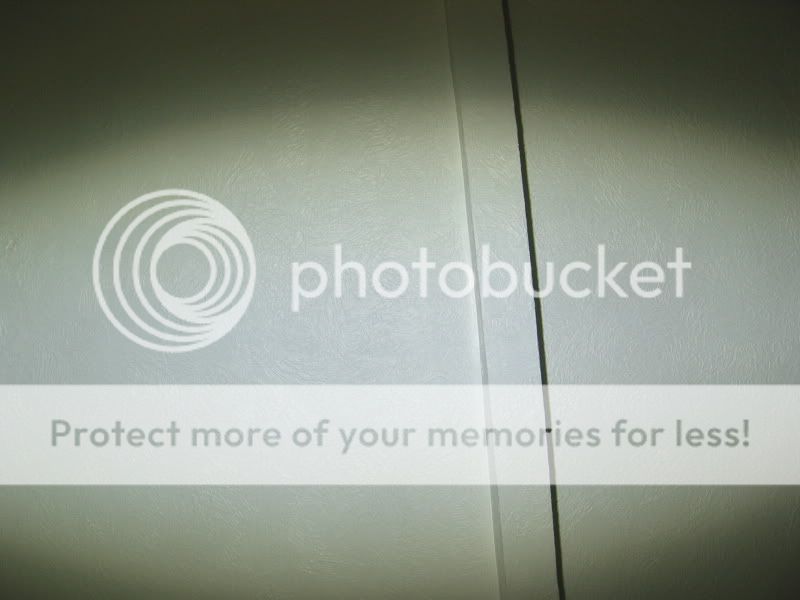
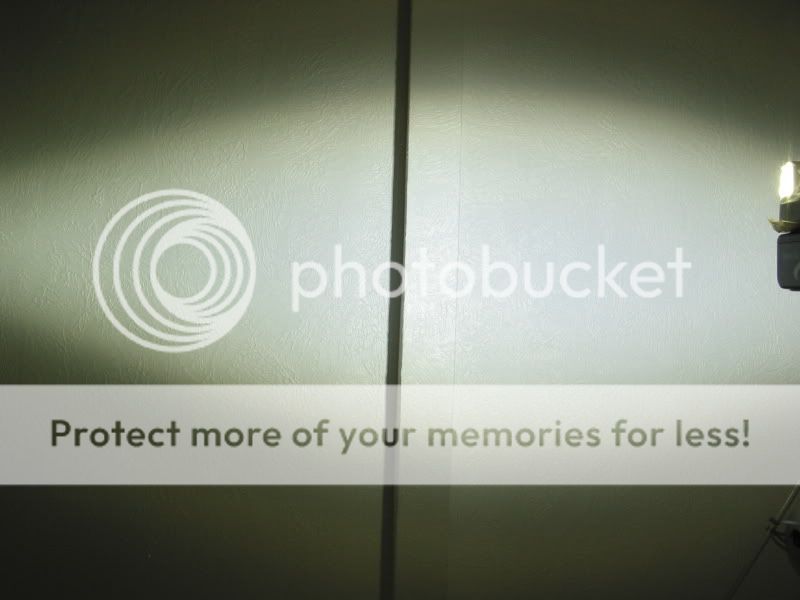
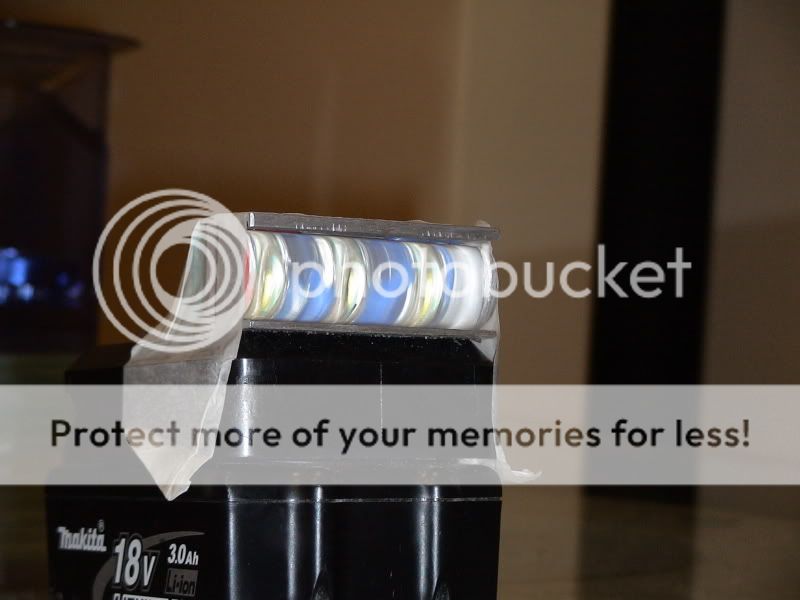
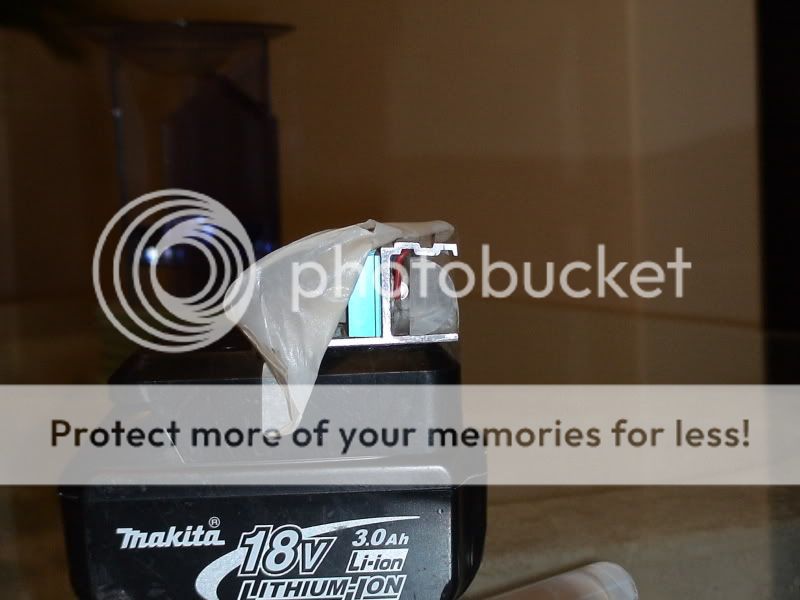
This is just a test rig I am working on experimenting with different sizes of acrylic bar
Now if you used a larger diameter bar and put 2 rows of leds one row dead centre and the other row above and maybe even less leds then to dip switch the centre off and the top on this then drops the beam a good amoumt this i hav not got round to testing yet.
Hey, I know it's been a while, but could you do any outdoor beamshots with a set up like this? I'd be interested in seeing how the light is distributed in a real life setting...
Hi, i quickly read this thread. Have there been any new inventions on designing a road front light beam?
maybe there is the possibility to design and build an own reflector, like this one in the cyo?
PS: sorry for my english, i only have had english in school and doesn't speak it regularly.
maybe there is the possibility to design and build an own reflector, like this one in the cyo?
PS: sorry for my english, i only have had english in school and doesn't speak it regularly.
maybe there is the possibility to design and build an own reflector, like this one in the cyo?
I don't think there are many people who could design and make such a reflector - or a similar total internal reflection optic.
I have now bought a Cyo - IMHO it has a close to perfect 'dip' beam.
Now I aim to make an MC-E based 'main' beam with a Ledil optic
- I have not has time yet to evaluate my MC-E / lens combination, not helped by my MC-E which seems to be overheating so I dare not try it for more than a few seconds.
Steve
I don't think there are many people who could design and make such a reflector - or a similar total internal reflection optic.
I was thinking about this the other night and was wondering about 2 different things:
1) Forming the appropriate surface somehow and then using strips of chrome tape to make it reflective - like this 24" reflector, but smaller.
2) Use an oven to hand form acrylic/plexiglass mirrors, like in these videos: DIY Plexiglass Mirror and Oven forming acrylic.
The profile on the Edelux/Cyo mirror looks like it wouldn't be hard to form:
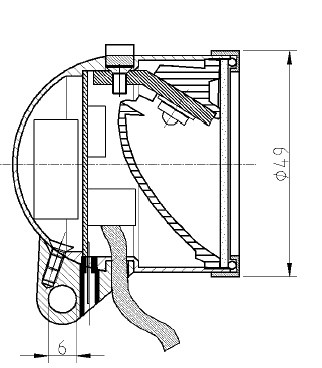
I may make a trip to tap plastics this weekend - the cutover in daylight savings is motivating me to get some more lights on the bikes.
By the way, I think using some bondo/putty to form the prototype mirror backing with some chrome tape for the surface would be a good first pass.
Last edited:
sfCyclotourist
Newly Enlightened
- Joined
- Nov 30, 2006
- Messages
- 93
I was thinking about this the other night and was wondering about 2 different things:
1) Forming the appropriate surface somehow and then using strips of chrome tape to make it reflective - like this 24" reflector, but smaller.
2) Use an oven to hand form acrylic/plexiglass mirrors, like in these videos: DIY Plexiglass Mirror and Oven forming acrylic.
The profile on the Edelux/Cyo mirror looks like it wouldn't be hard to form:

I may make a trip to tap plastics this weekend - the cutover in daylight savings is motivating me to get some more lights on the bikes.
By the way, I think using some bondo/putty to form the prototype mirror backing with some chrome tape for the surface would be a good first pass.
I just watched a different video by the same Green Power Science guy where he demonstrates constructing a parabolic mirror using the bottom of a steel drum for the base parabolic shape, filling that with concrete to form a positive mold, and then laying plexiglas over the concrete mold to form the mirror's back. Finally, a two-part mirrored mylar was used inside the plexiglas parabola to create the reflective surface.
http://blog.makezine.com/archive/2008/08/diy_parabolic_mirror.html
I'd bet you could scale this technique down to make a bike light reflector. If you could find somebody with a Cyo who'd let you open up the light and borrow the parabolic reflector within, you could use that along with some expanding spray foam (the stuff in a can you use to plug random holes in house walls, etc.) to create the positive mold. You'd have to put some sort of release agent inside the Cyo's reflector -- grease, wax, or maybe even plastic wrap. Once you have the positive mold, you could use the same fiberglas technique from the video to make the actual reflector backing, and then line it with the same 2-part mirrored mylar.
sfCyclotourist
Newly Enlightened
- Joined
- Nov 30, 2006
- Messages
- 93
The profile on the Edelux/Cyo mirror looks like it wouldn't be hard to form:

Keep in mind that the B&M Fly/Cyo/Edelux reflector isn't "smooth" on the inside, rather it's scalloped or stepped. See this image, noting the 4 sections or panels on the reflector.
Remember a few things.
Reflector surfaces are fragile. There is a really good chance that taking a mold from a Cyo/Fly/Edelux reflector would destroy it. Anything that gets on that surface will have to be cleaned, and how are you going to do that?
Reflectors are designed with a very specific source, in a very specific location. Swapping an XR-E for an MC-E, for example, changes the throw pattern significantly. Changing an XP-E to an XP-G has major consequences. Likewise moving the emitter w/respect to the reflector. If you look at an H-4 bulb, the high and low filaments are separated by ~3mm, in a much larger reflector.
You can get an IQ Fly from White for ~75$. If I wanted to have an StvZO reflector to play with, I'd do it that way. Much faster.
Reflector surfaces are fragile. There is a really good chance that taking a mold from a Cyo/Fly/Edelux reflector would destroy it. Anything that gets on that surface will have to be cleaned, and how are you going to do that?
Reflectors are designed with a very specific source, in a very specific location. Swapping an XR-E for an MC-E, for example, changes the throw pattern significantly. Changing an XP-E to an XP-G has major consequences. Likewise moving the emitter w/respect to the reflector. If you look at an H-4 bulb, the high and low filaments are separated by ~3mm, in a much larger reflector.
You can get an IQ Fly from White for ~75$. If I wanted to have an StvZO reflector to play with, I'd do it that way. Much faster.
Last things first...
I think thats a good argument for not going with a straight cast of the Cyo/Fly/Edelux reflectors, but finding a way to (relatively) easily prototype your own reflector based on the chopped parabola B+M reflector design. I'm thinking that once the neutral white XPG's come out, a pair of 5A R-something binned XPGs with boost caps would be really good for a dynamo light, and almost perfect if you could get this kind of reflector for it.
Yeah, I saw that video last night too! Between the stuff found on instructables, makezine and just trolling youtube, you it seems you could make just about anything.
Its not actually about getting it done faster - I've got a D'Lumotec and just built an auxiliary light to go with it that will be more than adequate for commuting, or even evening training rides (assuming I can get my sick rear out on the roads in the evenings). At this point is mostly a hobby/challenge. I will need one more light for a bike that I am slowly building up and I could afford to just buy an Cyo or Edelux and be done with it if I didn't think this just an interesting problem that _should_ be solvable by hobbyists.You can get an IQ Fly from White for ~75$. If I wanted to have an StvZO reflector to play with, I'd do it that way. Much faster.
Remember a few things.
Reflector surfaces are fragile. There is a really good chance that taking a mold from a Cyo/Fly/Edelux reflector would destroy it. Anything that gets on that surface will have to be cleaned, and how are you going to do that?
Reflectors are designed with a very specific source, in a very specific location. Swapping an XR-E for an MC-E, for example, changes the throw pattern significantly. Changing an XP-E to an XP-G has major consequences. Likewise moving the emitter w/respect to the reflector. If you look at an H-4 bulb, the high and low filaments are separated by ~3mm, in a much larger reflector.
I think thats a good argument for not going with a straight cast of the Cyo/Fly/Edelux reflectors, but finding a way to (relatively) easily prototype your own reflector based on the chopped parabola B+M reflector design. I'm thinking that once the neutral white XPG's come out, a pair of 5A R-something binned XPGs with boost caps would be really good for a dynamo light, and almost perfect if you could get this kind of reflector for it.
SFCyclotourist said:I just watched a different video by the same Green Power Science guy where he demonstrates constructing a parabolic mirror using the bottom of a steel drum for the base parabolic shape, filling that with concrete to form a positive mold, and then laying plexiglas over the concrete mold to form the mirror's back. Finally, a two-part mirrored mylar was used inside the plexiglas parabola to create the reflective surface.
http://blog.makezine.com/archive/200...ic_mirror.html
Yeah, I saw that video last night too! Between the stuff found on instructables, makezine and just trolling youtube, you it seems you could make just about anything.
Last edited:
znomit
Enlightened
Spin casting epoxy is perhaps the way to go...
http://www.math.udel.edu/~pelesko/PBLOG/Team_3_spin_017.pdf
http://www.math.udel.edu/~pelesko/PBLOG/Team_3_spin_017.pdf
clint357
Newly Enlightened
Hey, I just saw this thread. I design automotive lights, but the same problem is encountered. I did some tests with this new 50mm aspheric lens from DX (http://www.dealextreme.com/details.dx/sku.13667), and it seems to do a decent job. Here is a link to my tests https://www.candlepowerforums.com/threads/247227
oh, i liked it much to read so many replies.
i have now a testversion of lucidshape for designing a reflector, i will try if i get some results or anything working. i will use the geometry of the cyo as pattern.
the bigger lightsource of the mc-e or two xp-g on one pbc is a problem for the reflectors of the cyo an iq, but if we can learn to work with this software we can design one that has two focal points.
i need to test the software.
i have now a testversion of lucidshape for designing a reflector, i will try if i get some results or anything working. i will use the geometry of the cyo as pattern.
the bigger lightsource of the mc-e or two xp-g on one pbc is a problem for the reflectors of the cyo an iq, but if we can learn to work with this software we can design one that has two focal points.
i need to test the software.
Supernova is offering an e-bike headlight with custom-designed TIR optics that satisfy German StVZO (rectangular beam with sharp vertical cutoff, see the beamshot).
At first glance, the acrylic part of the "E3 E-BIKE" looks plain round, only the center near the LED reveals some vertical structure.
At first glance, the acrylic part of the "E3 E-BIKE" looks plain round, only the center near the LED reveals some vertical structure.
Last edited:
Hi Martin,
Thanks for pointing that out. It looks like they offer the option on their dynamo light as well, as the "glare free lens".

Interesting beam pattern. I think this posting is about one user's impressions of it:
swhs
Newly Enlightened
Hi Martin,
Thanks for pointing that out. It looks like they offer the option on their dynamo light as well, as the "glare free lens".

Interesting beam pattern. I think this posting is about one user's impressions of it:
Probably not, the 'bat signal' is almost certainly the earlier version. I do't know if they redesigned their lens, but the previous one was rather poor. See
http://nabendynamo.de/service/pdf/ar_11-12_2008.pdf
Also, supernova say the light does not conform to StVZO (german regulations) because it's 3 Watt, but the issue is not how much Watt, but instead the light intensity at specific points which must be below a specified amount, compared to the where the brightest spot is. The IQ Cyo and Edelux run current doublers and depending on speed, the LED will probably get up to ca. 3.5W.
StVZO (April 2009) says (http://norm.bverwg.de/jur.php?stvzo,67):
(1)
Fahrräder müssen für den Betrieb des Scheinwerfers und der Schlußleuchte mit einer Lichtmaschine ausgerüstet sein, deren Nennleistung mindestens 3 W und deren Nennspannung 6 V beträgt (Fahrbeleuchtung). Für den Betrieb von Scheinwerfer und Schlußleuchte darf zusätzlich eine Batterie mit einer Nennspannung von 6 V verwendet werden (Batterie-Dauerbeleuchtung). Die beiden Betriebsarten dürfen sich gegenseitig nicht beeinflussen.
There is no maximum power defined. In the older version of 1998 there wasn't one either, it spoke of at least 3 Watt in a 6V system. Very very long ago it was customary to have 0.6W rear lights and 2.4 W front lights (in Germany and NL, don't know about other countries), but I don't know if/how that was incorporated into old regulations.
I think supernova just plays a game here, implying their light is too bright for the regulations whereas it's not (see e.g. the much brighter Busch & Mueller Big bang) unless you count the places where it should be dark. Yes, there it is too bright. So the beam pattern just doesn't comply.
Probably not, the 'bat signal' is almost certainly the earlier version. I do't know if they redesigned their lens, but the previous one was rather poor. See
http://nabendynamo.de/service/pdf/ar_11-12_2008.pdf
Ahhh, I see - that's definitely the Bat Signal on the older asymmetric beam. The beamshot for the "Glare Free" lens is interesting - the brightest section at the top of the beam pattern kind of looks like the emitter image that you see from "real spot" optics (I get a pretty obvious emitter image with my cree and carclo spot optic).
Looking at that PDF, I thought that Edelux, Inoled and B+M used the same optics, but interestingly the Inoled extreme seems to have the smoothest gradient along with a slightly longer "tail".
BrianMc
Enlightened
- Joined
- Nov 4, 2009
- Messages
- 940
But with the $15 E6 replacement reflector from Peter White you can get something approaching the E6 beam pattern?
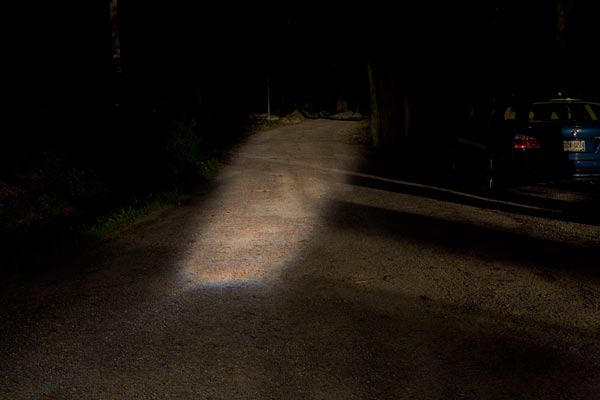
Has anyone played with this reflector?
It seems to me that it may have a very fussy on focal point.
If it isn't too fussy, then more light from a broader source might be halfway decent. lovecpf
Similar threads
- Replies
- 4
- Views
- 619
- Replies
- 9
- Views
- 1K
